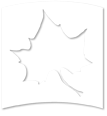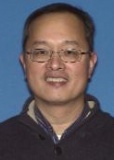Dr. Qihao Weng
Education
- Ph.D. - Geography, University of Georgia - 1999
Hu, X. and Q. Weng. 2009 (expected). Estimation of impervious surfaces of Beijing, China, with spectral normalized images using LSMA and ANN. Geocarto International. Accepted on May 29, 2009.
Hu, X. and Q. Weng. 2009. Estimating impervious surfaces from medium spatial resolution imagery using the self-organizing map and multi-layer perceptron neural networks, Remote Sensing of Environment, 113 (2009), 2089-2102.
Tong, X., Liu, S. and Q. Weng. 2009 (expected). Geometric processing of Quickbird stereo imagery for urban land use mapping - a case study in Shanghai, China. IEEE Journal of Selected Topics in Applied Earth Observations & Remote Sensing. Accepted on April 13, 2009.
Amiri, R., Weng, Q., Alimohammadi, A. and S.K. Alavipanah. 2009. Spatial-Temporal Dynamics of Land Surface Temperature in Relation to Fractional Vegetation Cover and Land Use/Cover in the Tabriz Urban Area, Iran. Remote Sensing of Environment, accepted August 5, 2009.
Weng, Q. 2009. Thermal infrared remote sensing for urban climate and environmental studies: methods, applications, and trends. ISPRS Journal of Photogrammetry and Remote Sensing, 64, 335-344.
Liu, H. and Q. Weng. 2009. An examination of the effect of landscape pattern, land surface temperature, and socioeconomic conditions on WNV dissemination in Chicago. Environmental Monitoring and Assessment. In press.
Rajasekar, U. and Weng, Q. 2009. Spatio-temporal modeling and analysis of urban heat islands by using Landsat TM and ETM+ Imagery. International Journal of Remote Sensing, 30(13), 3531-3548.
Weng, Q. and D. Lu. 2009. Landscape as a continuum: an examination of the urban landscape structures and dynamics of Indianapolis city, 1991-2000. International Journal of Remote Sensing, 30(10), 2547-2577.
Weng, Q., Hu, X., and H. Liu. 2009. Estimating impervious surfaces using linear spectral mixture analysis with multi-temporal ASTER images. International Journal of Remote Sensing. In press.
Lu, D. and Q. Weng. 2009. Extraction of urban impervious surfaces from IKONOS imagery. International Journal of Remote Sensing, 30(5), 1297-1311.
Rajasekar, U. and Weng, Q. 2009. Application of association rule mining for exploring the relationship between urban land surface temperature and biophysical/social parameters. Photogrammetric Engineering & Remote Sensing, 75(4): 385-396.
Liu, H. and Q. Weng. 2009. Scaling-up effect on the relationship between landscape pattern and land surface temperature. Photogrammetric Engineering & Remote Sensing, 75(3): 291-304.
Rajasekar, U. and Weng, Q. 2009. Urban heat island monitoring and analysis by data mining of MODIS imageries. ISPRS Journal of Photogrammetry and Remote Sensing, 64(1): 86-96.
Liu, H., Weng, Q. and D. Gaines. 2008. Multi-temporal analysis of the relationship between WNV dissemination and environmental variables in Indianapolis, U.S.A. International Journal of Health Geographics, 7(66), doi: 10.1186/1476-072X-7-66.
Weng, Q., Liu, H., Liang, B. and D. Lu. 2008. The spatial variations of urban land surface temperatures: pertinent factors, zoning effect, and seasonal variability. IEEE Journal of Selected Topics in Applied Earth Observations and Remote Sensing, 1(2): 154-166.
Liang, B. and Weng, Q. 2008. A multi-scale analysis of census-based land surface temperature variations and determinants in Indianapolis, United States. Journal of Urban Planning and Development, 134(3): 129-139.
Liu, H. and Q. Weng. 2008. Seasonal variations in the relationship between landscape pattern and land surface temperature in Indianapolis, U.S.A. Environmental Monitoring and Assessment. 144(1-3): 199-219..
Weng, Q. and X. Hu. 2008. Medium spatial resolution satellite imagery for estimating and mapping urban impervious surfaces using LSMA and ANN. IEEE Transaction on Geosciences and Remote Sensing, 46(8): 2397-2406.
Weng, Q. and D. Lu. 2008. A sub-pixel analysis of urbanization effect on land surface temperature and its interplay with impervious surface and vegetation coverage in Indianapolis, United States. International Journal of Applied Earth Observation and Geoinformation. 10(2008): 68-83.
Weng, Q., Hu, X. and D. Lu. 2008. Extracting impervious surface from medium spatial resolution multispectral and hyperspectral imagery: A comparison. International Journal of Remote Sensing, 29(11): 3209 - 3232.
Xiao, R., Weng, Q., Ouyang, Z., Li, W., Schienke, E.W. and Z. Zhang. 2008. Land surface temperature variation and major factors in Beijing, China. Photogrammetric Engineering & Remote Sensing, 74(4): 451-461.
Melesse, A., Weng, Q., Thenkabail, P., and Senay, G. 2007. Remote sensing sensors and applications in environmental resources mapping and modeling. Sensors, 7:� 3209-3241.
Weng, Q. 2007. A historical perspective of river basin management in the Pearl River Delta of China. Journal of Environmental Management, 85(4): 1048-1062.
Xiao, H. and Weng, Q. 2007. The impact of land use and land cover changes on land surface temperature in a Karst area of China. Journal of Environmental Management, 85: 245-257.
Fan, F., Weng, Q. and Y. Wang. 2007. Land use and land cover change in Guangzhou, China, from 1998 to 2003, based on Landsat TM /ETM+ imagery. Sensors, 7: 1323-1342.
Weng, Q., Liu, H. and D. Lu. 2007. Assessing the effects of land use and land cover patterns on thermal conditions using landscape metrics in city of Indianapolis, United States. Urban Ecosystem, 10: 203-219.
Li, G. and Weng, Q. 2007. Measuring the quality of life in city of Indianapolis by integration of remote sensing and census data. International Journal of Remote Sensing, 28(2): 249-267.
Lu, D. and Weng, Q. 2007. A survey of image classification methods and techniques for improving classification performance. International Journal of Remote Sensing, 28(5): 823-870.
Lu, D. and Weng, Q. 2006. Spectral mixture analysis of ASTER imagery for examining the relationship between thermal features and biophysical descriptors in Indianapolis, Indiana. Remote Sensing of Environment, 104(2): 157-167.
Weng, Q., Lu, D. and B. Liang. 2006. Urban surface biophysical descriptors and land surface temperature variations. Photogrammetric Engineering & Remote Sensing, 72(11): 1275-1286
Lu, D., Weng, Q. and G. Li. 2006. Residential population estimation using remote sensing derived impervious surface. International Journal of Remote Sensing, 27(16): 3553-3570.
Weng, Q. and S. Yang. 2006. Urban air pollution patterns, land use, and thermal landscape: an examination of the linkage using GIS. Environmental Monitoring and Assessment, 117(1-3): 463-489.
Weng, Q. 2006. An evaluation of spatial interpolation accuracy of elevation data, In Riedl, A., Kainz, W. and G.A. Elmes (eds.): Progress in Spatial Data Handling. Springer-Verlag, Berlin, pp. 805-824.
Lu, D. and Weng, Q. 2006. Use of impervious surface in urban land use classification. Remote Sensing of Environment, 102(1-2): 146-160.
Lu, D. and Weng, Q. 2005. Urban Land-Use and Land-Cover Mapping Using the Full Spectral Information of Landsat ETM+ Data in Indianapolis, Indiana. Photogrammetric Engineering & Remote Sensing, 71(11): 1275-1284.
Li, G. and Weng, Q. 2005. Using Landsat ETM+ Imagery to Measure Population Density in Indianapolis, Indiana, USA. Photogrammetric Engineering & Remote Sensing, 71(8): 947-958.
Weng, Q., Lu, D. and J. Schubring. 2004. Estimation of Land Surface Temperature-Vegetation Abundance Relationship for Urban Heat Island Studies. Remote Sensing of Environment, 89(4): 467-483.
Weng, Q. and S. Yang. 2004. Managing the Adverse Thermal Effects of Urban Development in a Densely Populated Chinese City. Journal of Environmental Management, 70(2): 145-156.
Lu, D. and Q. Weng. 2004. Spectral Mixture Analysis of the Urban Landscape in Indianapolis with Landsat ETM+ Imagery. Photogrammetric Engineering & Remote Sensing, 70(9): 1053-1062.
Weng, Q. and Yang, S. 2003. An Approach to Evaluation of Sustainability for Guangzhou�s Urban Ecosystem. International Journal of Sustainable Development and World Ecology, 10(1): 69-81.
Weng, Q. 2003. Fractal Analysis of Satellite-Detected Urban Heat Island Effect. Photogrammetric Engineering & Remote Sensing, 69(5): 555-566.
Weng, Q., Qiao, L., Yang, S., and H. Guo. 2003. Guangzhou�s Growth and Urban Planning, 1960-1997: an Analysis through Remote Sensing. Asian Geographer, 22(1-2): 77-92.
Weng, Q. 2002. Quantifying uncertainty of digital elevation models derived from topographic maps. In: Advances in Spatial Data Handling, edited by D. Richardson and P. van Oosterom, Springer-Verlag, New York, pp.403-418.
Weng, Q. 2002. Land use change analysis in the Zhujiang Delta of China using satellite remote sensing, GIS, and stochastic modeling. Journal of Environmental Management, 64: 273-284.
Weng, Q. 2001. A remote sensing-GIS evaluation of urban expansion and its impact on surface temperature in the Zhujiang Delta, China. International Journal of Remote Sensing, 22(10): 1999-2014.
Weng, Q. and C. P. Lo. 2001. Spatial Analysis of Urban Growth Impacts on Vegetative Greenness with Landsat TM Data. Geocarto International, 16(4): 17-25.
Weng, Q. 2001. Modeling urban growth effect on surface runoff with the integration of remote sensing and GIS. Environmental Management, 28(6): 737-748.
Weng, Q. 2001. Human-environment interactions in agricultural land use in a South China�s wetland region: a study on the Zhujiang Delta in the Holocene. GeoJournal, 51(3): 191-202.
Weng, Q. 1998. Local impacts of the post-Mao development strategy: the case of the Zhujiang Delta. International Journal of Urban and Regional Research, 22(3): 425-442.
Recent Books
Weng, Q. and Dale A. Quattrochi. 2006. Urban Remote Sensing, CRC Press/Taylor and Francis, pp. 448. (ISBN: 0849391997)
Weng, Q. 2007. Remote Sensing of Impervious Surfaces, CRC Press/Taylor and Francis, pp. 454.
Weng, Q. 2009. Remote Sensing and GIS Integration: Theories, Methods, and Applications. New York: McGraw-Hill.
Weng, Q. 2010. Advances in Environmental Remote Sensing: Sensors, Algorithms, and Applications, CRC Press/Taylor and Francis, forth coming.
Dr. Weng has worked in the United States and China on diverse research projects including such topics as urban expansion, land use and land cover change, urban heat island, environmental sustainability, and human-environment interactions. He has published more than 100 refereed journal articles and book chapters. Dr. Weng is an Associate Editor of ISPRS Journal of Photogrammetry and Remote Sensing, and the series editor for both Taylor & Francis Series in Remote Sensing Applications, and McGraw-Hill Series in GIS&T. He is currently a national director of American Society for Photogrammetry and Remote Sensing (ASPRS, 2007-2010). Dr. Weng was the recipient of 1999 Robert E. Altenhofen Memorial Scholarship Award by American Society for Photogrammetry and Remote Sensing, and 1998 Best Student Authored Paper Award by International Geographic Information Foundation. In 2006, he received the Theodore Dreiser Distinguished Research Award by Indiana State University, the university�s highest research honor. In 2008, Dr. Weng was awarded a senior fellowship from NASA.
Dr. Weng is currently principal investigator of a National Science Foundation grant: �Role of Urban Canopy Composition and Structure in Determining Heat Islands: A Synthesis of Remote Sensing and Landscape Ecology Approach", and "Indiana Impervious Surface Mapping Initiative". Additionally, he is working on the project: �Biodiversity and Habitat in Indiana in 2000". To learn more about Dr. Weng's research activities, please visit his personal web.
If you are interested in working with Dr. Weng as a graduate student, please read the following web site for an application procedure and materials:


